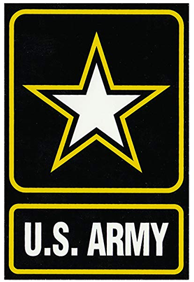The Client

Fort Hood is the Army's Premier Installation to train and deploy heavy forces. A 214,968 acre installation, Fort Hood is the only post in the United States capable of stationing and training two Armored Divisions.
The rolling, semi-arid terrain is ideal for multifaceted training and testing of military units and individuals.
The Challenge
Fort Hood uses 1,000 IT assets such as servers, computers, network switches and more, in eight buildings on-base and three locations off-base in Fort Bliss, Texas; Fort Sill, Oklahoma; and White Sands, New Mexico. Each year, aging equipment must be retired and new gear deployed; a constantly moving pool of assets.
“There is a continual need for information related to our IT assets,” said Terry French, property manager for the base’s IT equipment. “The U.S. government demands accountability for the property assigned to us.”
The base must keep track of each asset type, number and location. These records become critical several times each year during audits, performed by IT managers and outside inspectors.
In the past, French relied on a cumbersome, manual system for asset tracking. When new items were received from the property book office, he wrote down a list of serial and model numbers. This information would be manually entered into a Microsoft Access database. Often, these hand-written lists were difficult to read and resulted in data entry errors.
When the need for field audits arose, French would spend hours – flashlight in hand – locating specific pieces of equipment. French often had to move assets around to view the serial and model numbers used to track the items. This data was then recorded using pen and paper and compared to the Access database. Unfortunately, French sometimes had difficulty reading his own handwriting.
“This was a time-consuming and cumbersome process,” French said. “Plus, the Access database was simply not designed to provide effective reports quickly at the time they were requested. I got tired of the wasted time and the errors that I struggled with each week.”
The Solution
When someone told French about Wasp's asset management software, he discovered that he liked the functionality and was pleasantly surprised to learn it was within his budget. The asset management system allows organizations to track and manage valuable company assets, conduct audits and instantly access managerial reports. Using Wasp's asset management software, French simplified and improved his entire process for IT asset management, from initial acquisition and receiving to tracking, auditing, reporting and disposing of assets.
IT assets typically bear barcode tags applied by the manufacturer, including the item’s serial number and model number. When new equipment is received, French scans each of these tags with a Wasp barcode scanner. The serial number and model number for the asset is automatically transferred into the asset management software. Using Wasp's asset tracking solution, French generates a unique barcode assigned to that particular device. He uses a Wasp barcode printer to create an asset tag, which is affixed to the asset in an easy-to-find location.
“This process is an easy, slick and fool-proof method for recording an asset’s serial number and model number using barcodes,” French said. “In the past, when I received new equipment, it took up to an hour to manually record all of the information. Now, that time has been reduced to less than 15 minutes.”
Similarly, Wasp's asset management system made it easier for French to dispose of aging assets, a process in which the value of the item and its history must be reported. “In the past, this was virtually impossible,” French said “I didn’t really know which assets should be eliminated, since there was no accurate accounting of these items. What’s more, I didn’t know when they were purchased, how much they were worth at the time of purchase, or how much they were worth now.”
Further complicating the issue, a government regulation stipulates that assets without a complete record may not be disposed of. Using Wasp's asset tracking solution, IT managers can easily generate reports that indicate which assets are over a certain age. These items can be located and disposed of quickly and easily.
IT managers at Fort Hood are subject to three types of information requests from the U.S. government: comprehensive field audits, where all assets must be accounted for and verified against master list; cyclical audits by a third-party, where a 10% sample is selected at random for inspection; and ad hoc reports upon request. Prior to using Wasp's asset management software, IT managers scrambled to prepare the appropriate records. Now, the information is readily available.
The Result
For field audits, French prints a list of all IT assets by location. At each building, he simply scans the barcode on each asset. The data then can be automatically compared to Wasp's asset management software to highlight any discrepancies. This has reduced the time required for a field audit from three days to less than half a day.
For cyclical inventory audits, French uses Wasps' asset management software to run a report of the selected assets to be audited. The report details where each asset is located so French can plan an efficient route for the inspection. What used to take a day or two now requires less than half a day. “Plus, the auditors are much happier with us since they complete their task much faster and more efficiently.”
“We have better information than ever before, plus we are saving tens of thousands of dollars in wasted time and effort,” French said. “I estimate that we save the equivalent of $30,000 in time, just on the reduced field auditing alone. I really don’t know how any government property manager could operate without something like Wasp's asset tracking solution. It has simplified my life.”
